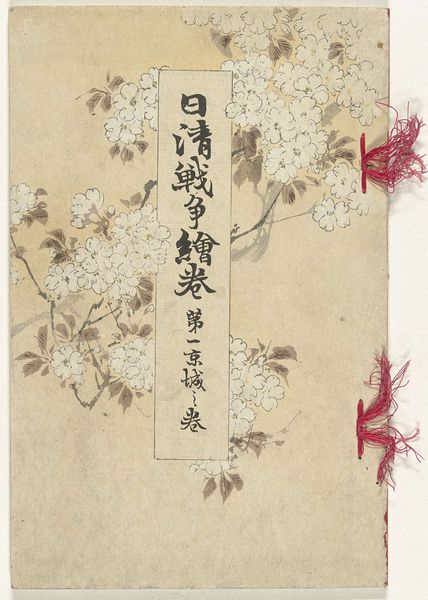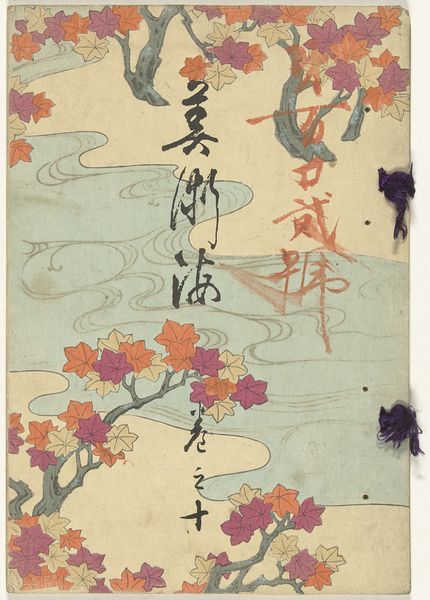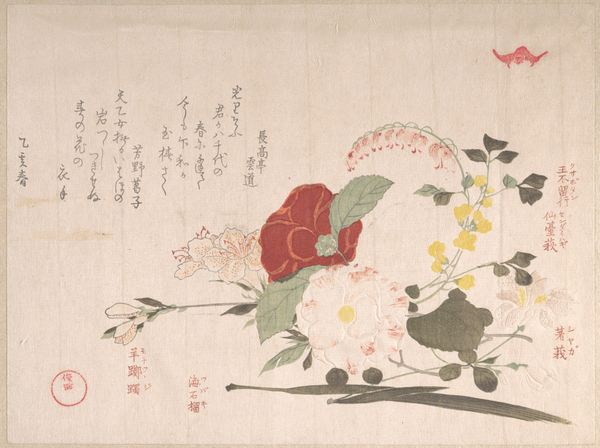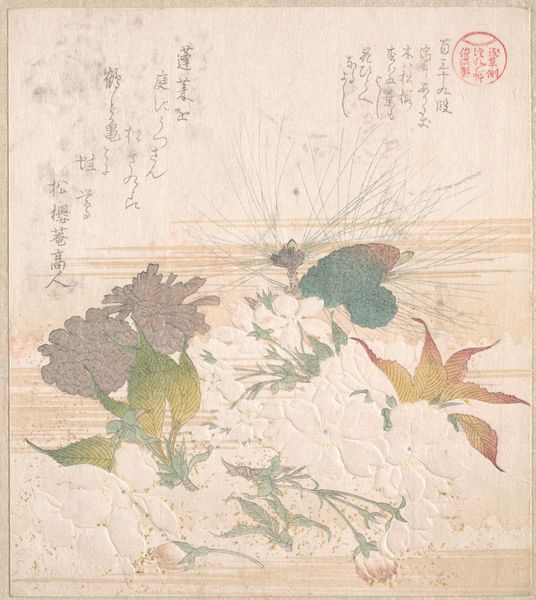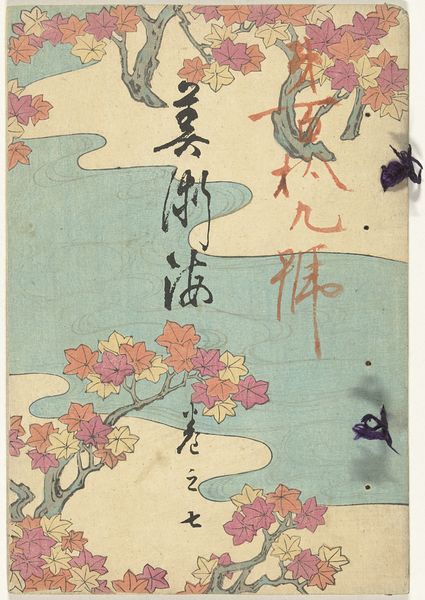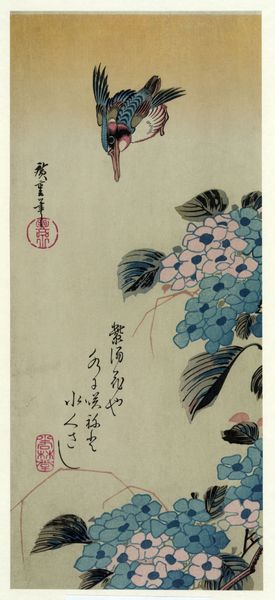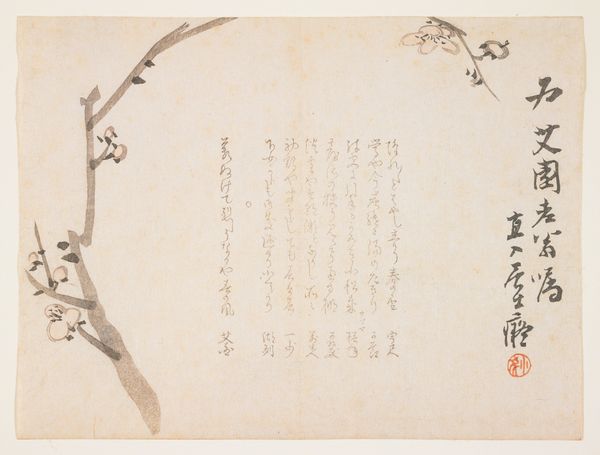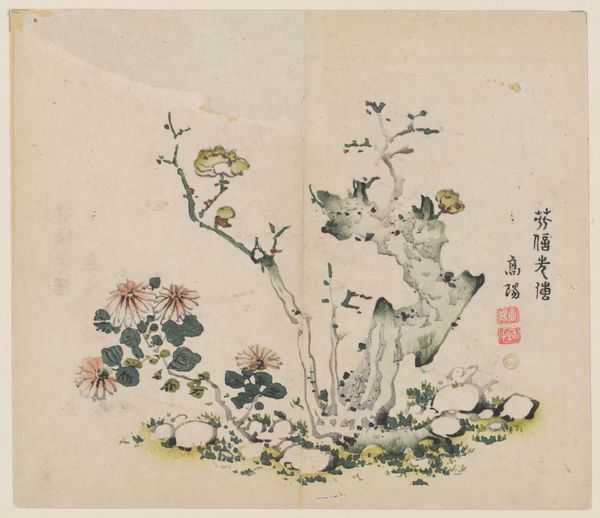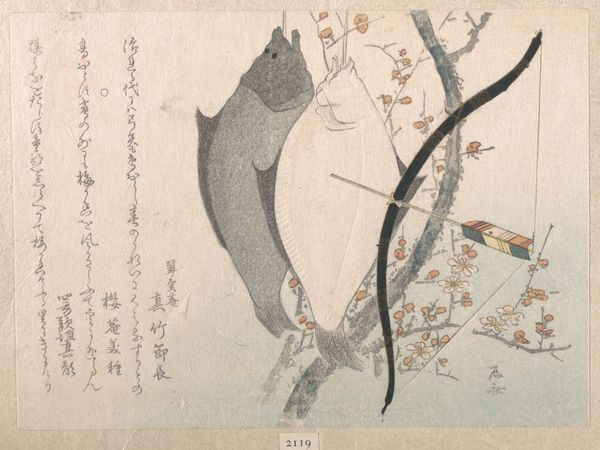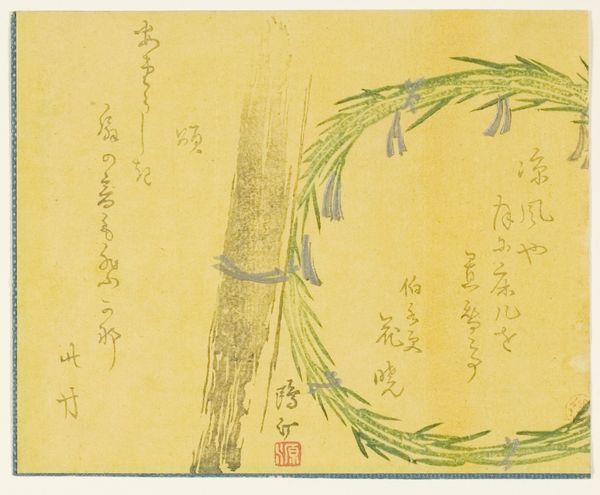
drawing, painting, ink
#
drawing
#
painting
#
asian-art
#
landscape
#
ink
#
watercolour illustration
#
botanical art
Dimensions: height 221 mm, width 281 mm
Copyright: Rijks Museum: Open Domain
Editor: Here we have Imao Keinen's "Inhoudsopgave" from 1892, currently housed in the Rijksmuseum. It's a beautiful watercolor and ink piece, combining delicate floral elements with calligraphy. The overall effect is incredibly serene. What is your take on this work? Curator: It’s intriguing, isn’t it? For me, this work resonates with the Japonisme movement and its complex relationship with cultural appropriation. Keinen, as a Japanese artist, is not appropriating, of course. But consider how Western artists during this period were exotifying Japanese aesthetics, often stripping them of their original context. How does Keinen, in your view, subvert or perhaps reinforce any stereotypes through his artistic choices? Editor: That's a perspective I hadn't considered. I was focused on the tranquil nature scenes, but the placement of the calligraphy does make it more like a "table of contents," as the title indicates. I see a negotiation here, maybe, where Keinen presents Japanese culture on his own terms? Curator: Precisely. He uses traditional motifs – flowers, landscapes, calligraphy – but arranges them in a way that might subtly comment on how the West was consuming Japanese art. The very act of labeling it "Inhoudsopgave," a Dutch word, creates an interesting tension. Is he indexing Japanese art for a Western audience or reclaiming control of the narrative? Editor: It makes you think about the power dynamics at play. So, what initially seemed like a straightforward landscape becomes a commentary on cultural exchange and representation? Curator: Exactly. And it reminds us to critically examine the historical context surrounding artworks, particularly during periods of intense cultural exchange, and to think about the artist’s agency within those exchanges. What’s your takeaway now? Editor: I’ll definitely approach such artworks with a deeper awareness of cultural context and power dynamics. It is no longer just a tranquil image, but a lens through which to consider historical cultural exchanges and power dynamics. Thanks!
Comments
No comments
Be the first to comment and join the conversation on the ultimate creative platform.
